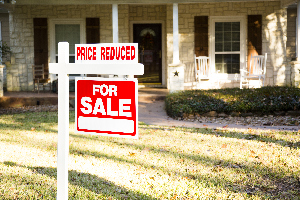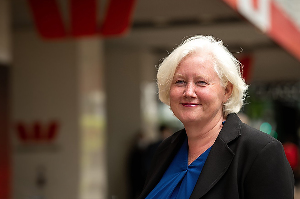
They have adjusted their forecast to 4% growth over this year but still maintain prices will rise to 6% next year in the bank’s latest Housing Update.
Westpac chief economist Kelly Eckhold says while demand for housing has improved this year, so has supply.
House sales have increased by around 17% year-on-year, house prices have increased by just 1% over the first half of the year.
“Generally, we expect the supply of housing to be less responsive than demand. But in 2025 this has not been the case.”
This reflects a couple of factors, he says.
The market has been relatively moribund since 2022 as monetary policy has tightened.
With sellers on the sidelines for two years, supply accumulated and is now being brought to market.
Despite slowing significantly from its peak, construction of new housing has stabilised at relatively high levels compared to history.
The large pipeline of unfinished projects has brought a reasonable volume of new housing –especially townhouses and apartments – into the market.
Relaxation of urban planning rules has also contributed at the margin.
Investor demand has been a strong point, Eckhold says. This reflects the more favourable tax arrangements available under the Government and lower interest rates.
“Credit demand has been led by the investor sector and is evolving in line with what we saw in the last easing period in 2019.”
Investor housing credit has grown by 5.5% over the past year and is a key booster of the 4.7% aggregate growth in housing credit so far this year.
Westpac’s ‘investor value’ house price model indicates that house prices lie somewhat below fair value from an investor perspective now that interest rates and tax levels are lower.
Eckhold says an improved labour market from later this year should lead to further growth in house sales that will help eat into accumulated inventory.
“Importantly interest rates are now low and likely at mildly stimulatory levels given Westpac’s judgement that the neutral OCR is 3.75% vs the current OCR of 3.25% and our forecast of a terminal OCR of 3%.”
Mortgage interest rates under 5% are expected to underpin demand. “And we still have a fair way to go before past mortgage rate reductions flow through to household budgets – which could be important in supporting demand for housing from existing owners.”
He says it is likely price growth will be still relatively muted in the winter months – Westpac expects only 0.75% price growth over the September quarter. Stronger trends should be evident as the peak selling season begins, with 1.75% growth forecast in the December quarter.
South is better
Meanwhile Kiwibank says the regional divide widens as everything just gets better the further you go south.
Compared with northern areas, the southern housing market has weathered the slowdown more evenly than others.
Southern mobile mortgage manager Shayne Hawtin says across the country, the housing market has remained largely locked in lateral moves.
Since stabilising in early 2023, national house prices are up just 1.8%. And since the RBNZ’s cutting cycle commenced in August, house prices have lifted by just half a percent.
“That’s not a market in recovery. It’s a market that is failing to find its footing,” he says.
Regions, particularly those in the south, who had shallower price corrections over the 2022-2023 downturn, continue to fare better than those that suffered the deepest declines.
Southland, Otago, and Canterbury, that had materially shallower declines of between 7- 10%, are either above or close to their post Covid highs.
House prices in Canterbury remain 4.1% below their early 2022 peak, but have recovered 6.5% from their 10% correction. And in Otago, house prices have hovered around their peak levels over the past couple of years, while prices in Southland are actually up 1% on their post-covid surge.
“Still, for an economy that has seen interest rates fall fast, we’d expect more,” Hawtin says. “Heightened job insecurity from a labour market still bleeding out, a surge in housing stock, the continued absence of investors, and rapidly declining net migration are all weighing heavily on the housing market’s recovery. Many of these pressures are themselves by-products of an economy that still needs stimulus.”
Kiiwbank says it is still seeing slow and measured growth across the housing market, but there are early signs of momentum starting to build-particularly among investors.
“While enquiry from investors has picked up, it has yet to translate into transactions,” Hawtin says.
“That said, the landscape is shifting in a way that suggests investor activity may return when interest rate reduce and there is more certainty around employment.”
One consequence of renewed investor activity could be increased competition, particularly affecting first home buyers.
“To date, first home buyers and movers have been a stabilising force in the slower market, keeping transaction volumes ticking over despite broader headwinds,” he says. “Their steady presence has been an important part of keeping the wheels turning."
Getting investors off the sidelines is key to the housing market recovery,” Hawtin says.
The reintroduction of interest deductibility, shortening the Brightline test, and watering down the CCCFA, have certainly helped calm investors. “But alongside building equity in portfolios, rates have not been low enough to entice investors back in. And its investors that will reignite the housing market.”
Beyond demand, the most important factor influencing house prices, and affordability, is supply, he says.
“Right now, there may be an oversupply of stock, driven by the subdued market, and well below-average net migration. But as soon as any of those taps are turned back on, our underlying shortage of affordable housing will become clearer.”
He says the country is still failing to tackle affordability with supply. About half the regions are still recording substantial declines in residential building consents. “To be fair, it’s a tough one to address when house prices remain depressed, building costs remain high, and infrastructure gaps continue to pose major barriers to progress.”




Comments
No comments yet.
Sign In to add your comment